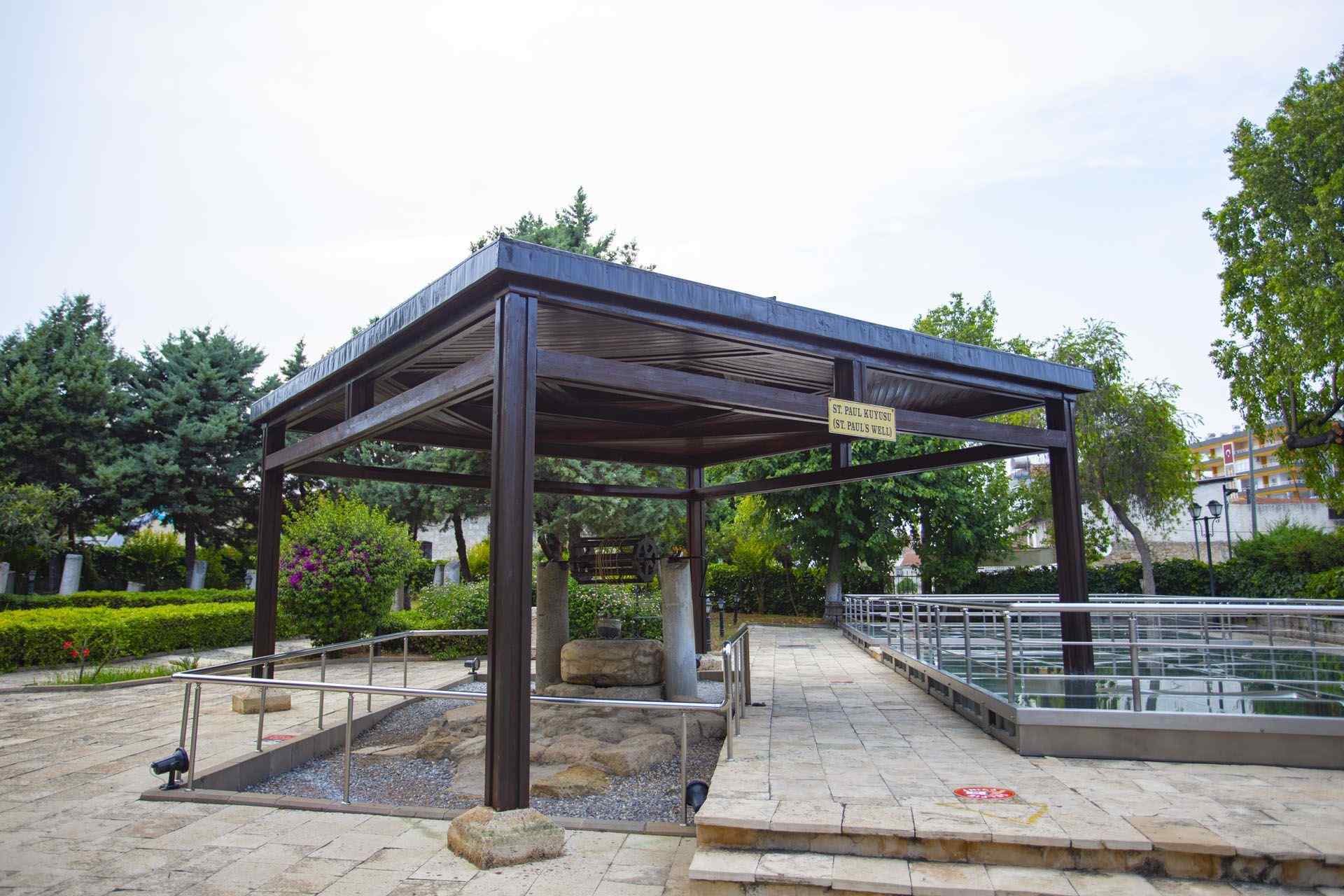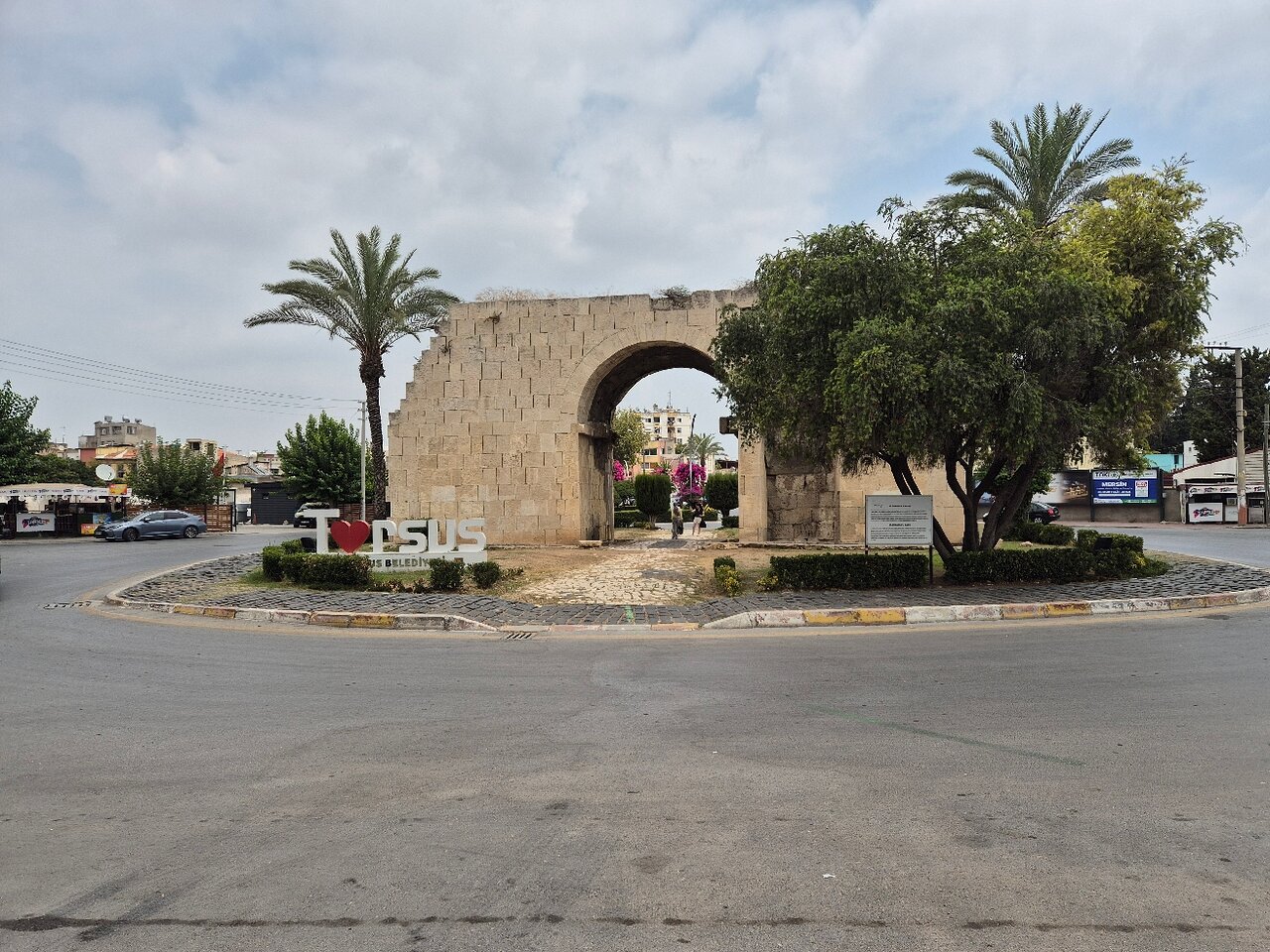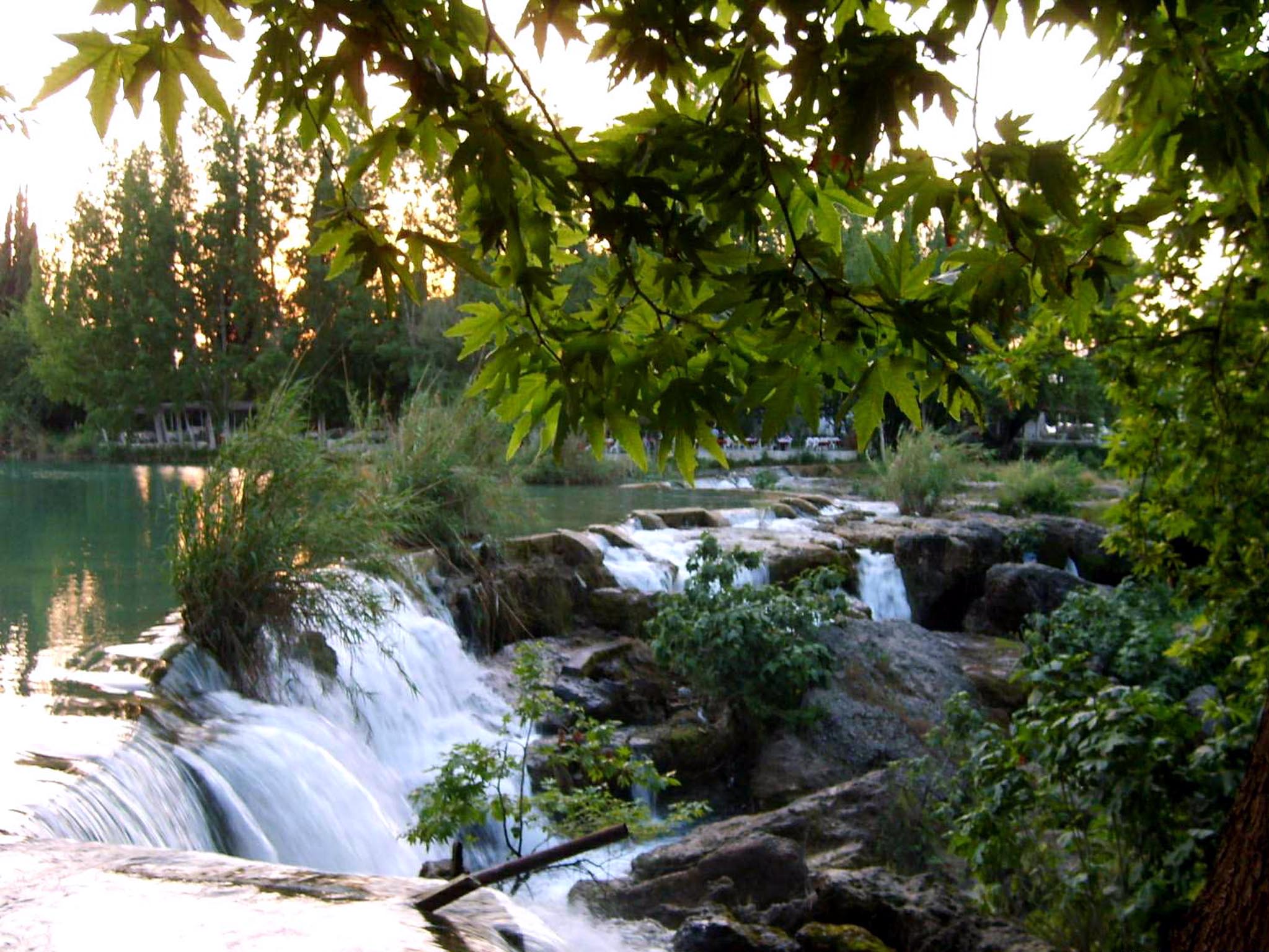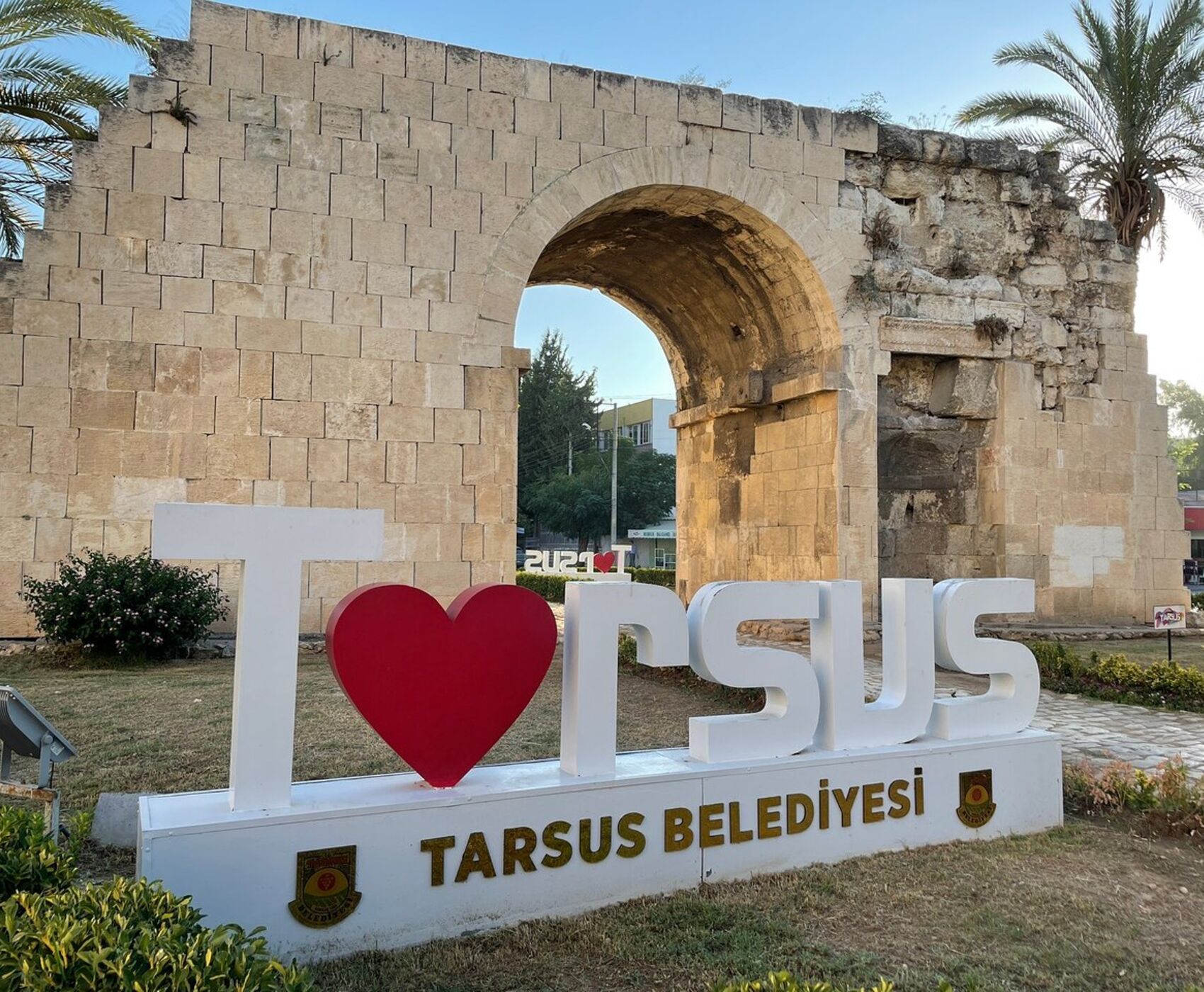Do you want to walk through a legacy thousands of years old, touch legends, and embark on an unforgettable journey in lands where different faiths have taken root? Then you are in the right place. This is Tarsus; not just a city, but a time capsule where history, beliefs, and legends come together in a vibrant mix. If you're thinking of creating a list of things to do in Tarsus, we have prepared an itinerary that offers much more than a standard travel guide. Believe us, every step you take in this city will transport you to a different time, a different story.
On this special tour, we will journey from a sacred well where an apostle was born, to a legendary gate through which a queen entered for her epic love, and then to a waterfall shaped by an emperor's engineering genius. If you're ready, this journey to discover the soul of Tarsus is about to begin!
Visit St. Paul's Well and the Memorial Museum

The first stop on our tour is the hometown of a figure who was a turning point not only for Christianity but for all of world history. Yes, we are talking about Saint Paul, also known as Paul of Tarsus. This pivotal figure, who played the most crucial role in Christianity's transformation into a world religion, was born and raised right here on this land.
The place known today as St. Paul's Well is the famous well in the courtyard of the house where Paul is believed to have lived with his family. The water of this well, approximately 18 meters deep, has been considered sacred for centuries and is believed to be healing; it is said that its water level never drops, summer or winter. For this reason, it is an important stop for Christian pilgrims on their way to Jerusalem and a sacred site on the UNESCO World Heritage Tentative List.
However, the importance of this stop is much deeper than just visiting the home of a religious figure. In that era, Tarsus was a center of philosophy rivaling Athens and Alexandria, a place with a strong Jewish tradition, and also a part of the Roman Empire. It was this triple foundation that made Paul who he was. The intellectual accumulation he gained by drawing from this rich cultural well of Tarsus enabled him to spread the Christian doctrine throughout the Roman world. So, you are not just looking at a well here, but at a cultural source that ignited a revolution in thought.
The nearby St. Paul Memorial Museum holds a special value as the only church dedicated to him that has survived to this day. When you step inside, the frescoes of Jesus and the Gospel writers (John, Matthew, Mark, and Luke) adorning the ceiling, the Corinthian-style columns, and the sky-blue ceiling decorations will transport you to another realm. The rich history of Tarsus is not limited to religious figures. To explore the other layers of the city, you can also check out our article on the historical and cultural riches of Mersin.
See the Historic Gate Where Cleopatra Legendarily Entered the City

Now, let's turn our route from the world of faith to a place where one of history's greatest stories of love and power unfolded. Before you stands the only surviving ancient city gate of Tarsus: Cleopatra's Gate. Actually, the original name of this gate was the Sea Gate, because in ancient times, the Berdan River (then known as the Kydnos) was a waterway that allowed ships to sail right into the city. So why is it now known by Cleopatra's name?
The year is 41 B.C. The Roman General Mark Antony invites the most powerful woman in the world, Queen Cleopatra of Egypt, to Tarsus. Cleopatra does not accept this invitation in an ordinary fashion. She glides into Tarsus via the river on her magnificent ship with gilded stern, silver oars, and purple sails, disguised as the goddess Aphrodite. She makes her entrance into the city through this very gate, captivating all the people of Tarsus with her arrival. This meeting becomes the beginning of that legendary love and political alliance that would change the course of history.
As you pass under this horseshoe-shaped arch, pause for a moment and think. This gate is not just the stage for a romantic story. The Antony-Cleopatra alliance that began here triggered a major civil war in Rome. At the end of this war, Octavian emerged victorious, becoming Rome's first emperor, Augustus, and the Roman Republic era ended, giving way to the Roman Empire. In other words, this gate is the starting point of the chain of events that led to the fall of a republic and the birth of an empire. It is truly awe-inspiring to stand before this structure that witnessed the very moments when the flow of history changed.
Take a Coffee Break at Tarsus Waterfall on the Berdan River

After the intense atmosphere of history and legends, it's time to take a breather. The final stop on our tour is just outside the city, offering you both the coolness of nature and another interesting layer of history: Tarsus Waterfall. The view created by the rushing waters of the Berdan River cascading from about 15 meters is one of the favorite escape spots for the people of Tarsus and visitors, especially in the spring and summer months.
Sit down at one of the tea gardens by the waterfall, order a coffee, and listen to the sound of the water. But know that even this pleasant break is not detached from history in Tarsus. Because this waterfall is not entirely a natural formation! In the 6th century, the Byzantine Emperor Justinian changed the course of the river to protect Tarsus from the constant threat of floods, and as a result of this engineering marvel, the waterfall we see today was formed.
And there's more. The area where the waterfall cascades is actually a Roman-era necropolis, or cemetery. Yes, you heard that right. While you sip your coffee, a piece of Roman history lies right beneath your feet. This is the magic of Tarsus. Even in your most relaxing moment, nature, Byzantine engineering, and Roman history are intertwined. This waterfall is like a summary of the city itself. The natural beauties of Tarsus don't end with the waterfall. To discover other paradise corners on the Mediterranean coast, take a look at our guide to Antalya's Kaleiçi Marina.
While You're Here...
Of course, what Tarsus has to offer is not limited to these three stops. If you have time, here are a few more places you should definitely add to your list:
Eshab-ı Kehf Cave (Cave of the Seven Sleepers): Visit the mysterious cave, considered sacred by both Christians and Muslims, where seven youths and their dog, Kitmir, are believed to have slept for 309 years to escape a tyrannical ruler for their faith.
Kırkkaşık Bedesten (Covered Bazaar): Located next to the Grand Mosque, this historic covered market was formerly used as a madrasa and soup kitchen. Today, it's a fantastic place to find local handicrafts, spices, and especially souvenirs featuring the famous Shahmaran figure.
Historic Tarsus Houses: Get lost in the narrow streets lined with old Tarsus houses made of stone, wood, and adobe, with their characteristic bay windows, and take some wonderful photos.
Makam-ı Danyal Mosque (Tomb of Prophet Daniel): Be sure to see this mosque with its highly spiritual atmosphere, which houses the tomb of the Prophet Daniel, believed to be the prophet of abundance.
Frequently Asked Questions
How many days should I set aside to visit Tarsus? To do Tarsus justice, absorb its historical atmosphere, and see the main sights comfortably, we recommend setting aside 2 full days. However, if your time is limited, you can fit the most important places into one day with good planning.
When is the best time to go to Tarsus? The ideal times to visit Tarsus are during the spring (April-May) and autumn (September-October) months when the weather is not oppressively hot. Although the summer months are quite hot, it is a great time to enjoy the coolness of the Tarsus Waterfall.
Where can I find the current visiting hours for museums and archaeological sites in Tarsus? Visiting hours and entrance fees may vary depending on the season or public holidays. Therefore, it is best to check official sources from the Republic of Turkey Ministry of Culture and Tourism for the most up-to-date and accurate information before planning your trip.
Source: For more detailed and official information, you can visit the Republic of Turkey Ministry of Culture and Tourism page ((https://kvmgm.ktb.gov.tr/TR-44125/mersin-tarsus-muze-mudurlugu.html)).
Meta Title:
Meta Description:


 English
English Türkçe
Türkçe